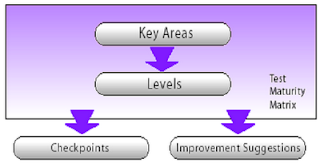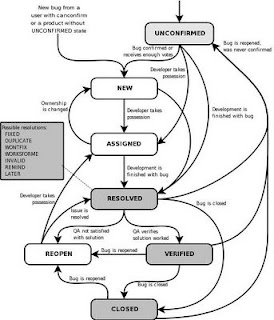
Is a tried and tested structured assessment of an organization’s testing maturity with a view to improving its overall testing and QA effectiveness and efficiency.
The TPI has been developed by Sogeti, a wholly-owned subsidiary of the international Capgemini organization. It goes hand in hand with the Test Management Approach (TMap) which is also a testing methodology from Sogeti.
The TPI methodology is an approach of evaluating the current state of the QA and testing processes in the organization according to 20 key dimensions (Key Areas). It provides a quick, well structured status report to the existing maturity of the test processes in the organizations as well as a detailed road-map to the steps needed to take in order to increase the maturity and quality of the testing process.
This model has four basic components -
- Key Areas
- Levels
- Checkpoints
- Improvement Suggestions
Key Areas
Life Cycle
Test strategy
Life-cycle model
Moment of involvement
Techniques
Estimating and planning
Test specification techniques
Static test techniques
Metrics
Infrastructure
Test automation
Test environment
Office environment
Organization
Commitment and motivation
Test functions and training
Scope of methodology
Communication
Reporting
Defect management
Test-ware management
Test process management
All Cornerstones
Evaluation
Low level testing
Levels
Each of the above key areas is assessed at various levels like A, B, C and D.
The number of levels for all the key areas is not the same. For e.g. Static Testing Techniques’ key area has only two levels – A and B. However, ‘Test Strategy’ has 4 levels – A, B, C and D.
Checkpoints
Each level has certain checkpoints for each of the key areas.
The test process under assessment should satisfy these checkpoints to be certified for that level.
Improvement Suggestions
The model also includes improvement suggestions to assist the organizations in achieving higher levels of maturity.



